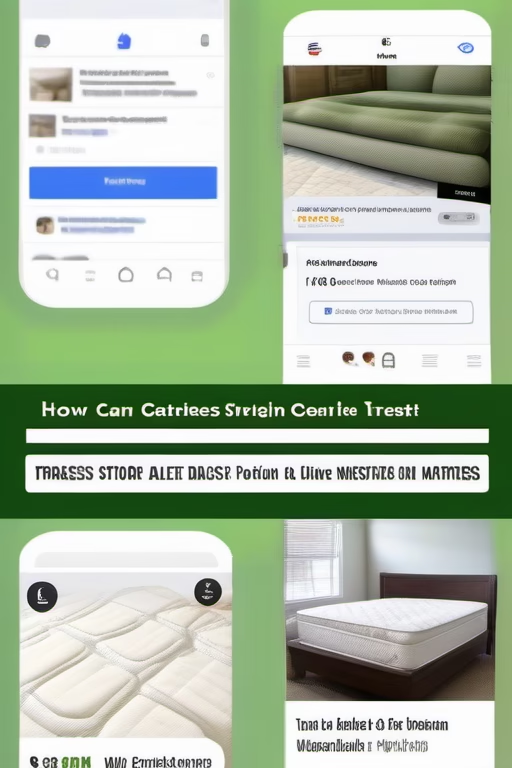TikTok Ads vs Facebook Marketplace Ads – What Wins?
Side-by-Side Advertising Showdown by Market Wiz AI
Table of Contents
- Introduction: TikTok Ads vs Facebook Marketplace Ads – What Wins?
- 1. Advertising Landscape Overview
- 1.1 The Rise of TikTok Advertising
- 1.2 Facebook Marketplace Ads Evolution
- 1.3 Why Compare These Platforms Now?
- 2. Audience Targeting Capabilities
- 2.1 TikTok’s Interest and Behavior Targeting
- 2.2 Facebook Marketplace’s Local and Demographic Targeting
- 2.3 Comparative Reach and Precision
- 3. Ad Formats and Creative Options
- 3.1 TikTok’s Video-First Approach
- 3.2 Static and Dynamic Ads on Marketplace
- 3.3 Engagement Potential by Format
- 4. Budget and Cost Comparison
- 4.1 TikTok CPC and CPM Benchmarks
- 4.2 Facebook Marketplace Ad Pricing Models
- 4.3 ROI Considerations Across Platforms
- 5. Performance Metrics & ROI
- 5.1 Click-Through Rates and Engagement
- 5.2 Conversion Tracking and Attribution
- 5.3 Case Studies: Real-World Examples
- 6. Setting Up Campaigns Step-by-Step
- 6.1 Creating a TikTok Ads Campaign
- 6.2 Launching Facebook Marketplace Ads
- 6.3 Budget Allocation Strategies
- 7. Best Practices & Optimization Tips
- 7.1 Creative Best Practices for TikTok
- 7.2 Optimizing Marketplace Listings
- 7.3 A/B Testing and Iteration
- 8. Conclusion: Which Platform Wins?
- 25 FAQs
- 25 Extra Keywords
Introduction: TikTok Ads vs Facebook Marketplace Ads – What Wins?
TikTok Ads vs Facebook Marketplace Ads – What Wins? is the question on every marketer’s mind as they seek the most effective channel to drive engagement, leads, and sales. Both platforms boast massive user bases, but their audiences, ad formats, and performance dynamics differ significantly. In this comprehensive guide, we’ll dissect each platform’s strengths and weaknesses—covering targeting depth, creative opportunities, cost structures, and measurable ROI—to help you determine which advertising powerhouse best suits your specific needs.
1. Advertising Landscape Overview
1.1 The Rise of TikTok Advertising
TikTok’s explosive growth has transformed it from a teen-dominated lip-sync app into a global advertising juggernaut. Brands leverage TikTok Ads to tap into Gen Z and young millennial audiences through immersive, short-form video content. TikTok’s algorithm—designed to surface viral-worthy material—means even small advertisers can achieve outsized reach if their creative resonates.
1.2 Facebook Marketplace Ads Evolution
Originally a peer-to-peer classifieds section, Facebook Marketplace has evolved into a robust advertising channel. Sellers can promote products directly within the Marketplace feed, targeting local buyers. With Facebook’s fusion of social graph data and Marketplace’s transaction-focused environment, advertisers can connect with intent-driven shoppers—those actively seeking products or services.
1.3 Why Compare These Platforms Now?
As digital advertising budgets tighten, marketers must allocate resources where they yield the highest ROI. TikTok Ads and Facebook Marketplace Ads represent two distinct strategies: one driven by viral video engagement, the other by buyer intent within a commerce-driven environment. Understanding which “wins” in your context hinges on analyzing audience fit, creative demands, cost efficiency, and measurable outcomes.
2. Audience Targeting Capabilities
2.1 TikTok’s Interest and Behavior Targeting
TikTok Ads leverage users’ in-app behavior—videos watched, liked, shares, and hashtag engagement—to build detailed interest profiles. Advertisers can target based on demographics (age, gender, location) and granular interests such as “beauty tutorials” or “fitness challenges.” Custom Audiences enable retargeting previous website visitors, while lookalike audiences extend reach to users resembling your best customers.
2.2 Facebook Marketplace’s Local and Demographic Targeting
Facebook Marketplace Ads tap into Facebook’s vast data trove: age, gender, location, interests, and purchase behaviors. Crucially, Marketplace targeting emphasizes local reach—geographic radius controls ensure ads appear to users within specific ZIP codes, cities, or mile radii. This local focus proves invaluable for brick-and-mortar businesses or sellers aiming to minimize shipping overhead by connecting with nearby buyers.
2.3 Comparative Reach and Precision
While TikTok’s algorithm excels at predicting which users will engage with your creative—driving rapid reach among younger demographics—Facebook Marketplace Ads deliver precision where users have purchase intent. TikTok’s targeting may cast a wider net for brand awareness, whereas Marketplace’s granular local filters hone in on ready-to-buy audiences. Your choice depends on whether you prioritize broad engagement or specific, conversion-ready prospects.
3. Ad Formats and Creative Options
3.1 TikTok’s Video-First Approach
TikTok Ads are predominantly vertical, full-screen videos designed to capture attention within seconds. Formats include In-Feed Ads (appearing seamlessly in users’ “For You” feeds), Branded Hashtag Challenges (encouraging user-generated content around a branded challenge), and Branded Effects (custom AR filters). TikTok’s emphasis on creativity and entertainment demands polished, authentic content—ads that mimic organic TikTok style often perform best.
3.2 Static and Dynamic Ads on Marketplace
Facebook Marketplace Ads primarily consist of single-image or carousel formats, showcasing product images, price, and key details. While less visually dynamic than TikTok’s video-centric approach, these ads benefit from clear product-centric messaging and immediate “Buy Now” or “Message Seller” CTAs. Dynamic ads automatically pull product information from your catalog, ensuring up-to-date pricing and availability—critical for e-commerce advertisers.
3.3 Engagement Potential by Format
TikTok’s immersive video formats drive high engagement—users can like, comment, share, and remix branded content—fueling virality. Conversely, Facebook Marketplace Ads prioritize transactional focus: clicks translate directly to product inquiries or purchases. Engagement on Marketplace is measured more by conversion metrics than social interactions. If your goal is to build brand buzz, TikTok’s interactive ecosystem excels; if you need straightforward sales, Marketplace’s commerce-driven format often “wins.”
4. Budget and Cost Comparison
4.1 TikTok CPC and CPM Benchmarks
TikTok Ads generally command higher CPMs (cost per thousand impressions) due to strong engagement and the platform’s popularity among Gen Z. Average CPMs range from $10–$25, with CPCs (cost per click) around $0.20–$1.00 depending on targeting specificity and ad quality. TikTok’s auction model means costs fluctuate based on competition—niche interest segments often cost more, but yield higher-quality engagement.
4.2 Facebook Marketplace Ad Pricing Models
Facebook Marketplace Ads operate on a bidding system similar to standard Facebook ads. CPMs typically hover between $5–$15, with CPCs around $0.10–$0.50. Marketplace’s local focus and higher purchase intent paths frequently result in lower overall cost-per-acquisition (CPA) compared to broader Facebook News Feed ads. However, creative costs (professional product photography) must be factored in to present items attractively.
4.3 ROI Considerations Across Platforms
ROI hinges on your objectives: TikTok’s higher engagement often requires larger budgets to maintain momentum, but the brand lift and viral potential can pay dividends in awareness and top-of-funnel growth. Facebook Marketplace Ads, while less flashy, often deliver quicker sales at a lower CPA. Calculate ROI by tracking total spend against revenue attributable to each platform—factoring in creative costs, labor, and time spent optimizing campaigns.
5. Performance Metrics & ROI
5.1 Click-Through Rates and Engagement
TikTok Ads often see CTRs (click-through rates) between 1%–3%, but engagement metrics—likes, shares, comments—can be significantly higher due to the platform’s interactive design. Facebook Marketplace Ads typically yield CTRs around 2%–5%, reflecting users’ readiness to inquire or purchase. Monitor both CTR and engagement to gauge whether users are merely curious or are progressing toward a transaction.
5.2 Conversion Tracking and Attribution
Set up conversion events—form fills, sales, app installs—using TikTok Pixel and Facebook Pixel. Use attribution windows (e.g., 7-day click, 1-day view) to assign credit accurately. TikTok’s shorter attention spans may require shorter attribution windows, whereas Marketplace’s purchase-driven environment might justify a longer window. Multi-touch attribution models help understand how each platform contributes across the buyer’s journey.
5.3 Case Studies: Real-World Examples
Example 1: A fashion e-commerce brand ran a TikTok In-Feed ad showcasing new arrivals, achieving a 2.5% CTR and a 15% boost in website visits. However, their Marketplace Ads for discontinued items generated a 4% CTR and a 30% higher conversion rate at half the CPA.
Example 2: A local home services company tested both platforms: TikTok Ads drove brand awareness—24,000 impressions, 1.2% CTR—but Marketplace Ads, targeting homeowners in a 10-mile radius, yielded a 5% CTR and booked 12 service appointments in one week. In this scenario, the local focus of Marketplace Ads “won” in terms of direct conversions.
6. Setting Up Campaigns Step-by-Step
6.1 Creating a TikTok Ads Campaign
- Sign into TikTok Ads Manager and select “Create Campaign.”
- Choose objective: Reach, Traffic, App Install, Conversions, or Video Views.
- Define your budget: daily or lifetime. Set bidding strategy—oCPM or CPC—and specify target demographics, interests, and behaviors.
- Upload creative: a vertical video (9:16) under 60 seconds. Add compelling headlines and CTA buttons (“Learn More,” “Shop Now”).
- Set optimization goals—e.g., conversions—and launch. Monitor performance in the “Campaign” dashboard to adjust bids and audience targeting.
6.2 Launching Facebook Marketplace Ads
- Go to Facebook Ads Manager and click “Create.” Choose objective: Traffic, Conversions, or Catalog Sales.
- Under “Placements,” select “Manual” and check “Marketplace.” Deselect other placements for focused testing or leave them on to expand reach.
- Define audience: specify location radius, age, gender, and interests. Set budget and schedule.
- Choose ad format: single image, carousel, or collection. Upload high-quality product images with clear pricing and descriptions.
- Add CTA button—“Buy Now” or “Learn More”—and review. Launch campaign and monitor via Ads Manager’s performance metrics tailored to Marketplace placements.
6.3 Budget Allocation Strategies
Allocate an initial test budget—e.g., $500 per platform—to gather baseline performance data. Use a 70/30 split: 70% on the platform showing early promise based on CTR and engagement, 30% on testing a secondary audience or creative variant. After 2–4 weeks of data, reallocate budget toward the highest ROI ad sets and scale accordingly.
7. Best Practices & Optimization Tips
7.1 Creative Best Practices for TikTok
- Hook in First 3 Seconds: Start with a visually striking moment or question to prevent users from scrolling past.
- Embrace Trends: Use popular audio tracks, challenges, or effects to increase the likelihood of organic reach.
- Authenticity Matters: Users respond to genuine, behind-the-scenes content. Avoid overly polished ads that feel disconnected from TikTok culture.
- Clear CTA: Include on-screen prompts and a verbal call-to-action directing viewers to swipe up, click the link in bio, or visit the website.
7.2 Optimizing Marketplace Listings
- High-Quality Imagery: Use clear, well-lit product photos on plain backgrounds to focus attention.
- Detailed Descriptions: Include keywords that buyers might search, such as “vintage dining table” or “certified pre-owned laptop.”
- Competitive Pricing: Research similar listings to set prices that attract clicks without undervaluing your products.
- Prompt Responses: Answer buyer inquiries quickly to build trust and secure sales before items go out of stock.
7.3 A/B Testing and Iteration
Continuously refine ad elements—creative, headlines, CTAs, and targeting. For TikTok, test different hooks or soundtracks. For Marketplace, experiment with various product images or price points. Analyze performance metrics weekly and pause underperforming ads to reallocate budget toward proven winners.
8. Conclusion: Which Platform Wins?
TikTok Ads vs Facebook Marketplace Ads – What Wins? Ultimately, the answer depends on your objectives. If you seek broad brand awareness, viral potential, and engagement with younger demographics, TikTok Ads often come out on top—provided you invest in creative, trend-driven content. However, if your goal is immediate sales, local targeting, and connecting with users already in a shopping mindset, Facebook Marketplace Ads typically deliver lower CPAs and higher direct conversions. Many savvy marketers run parallel campaigns: using TikTok to build buzz and retargeting engaged users with Marketplace Ads for final purchase. By understanding each platform’s unique strengths and aligning them with your business goals, you can create a winning, hybrid strategy that leverages the best of both worlds.
25 Frequently Asked Questions
1. What is the main difference between TikTok Ads vs Facebook Marketplace Ads – What Wins?
TikTok Ads excel at brand awareness and engagement through creative video formats, while Facebook Marketplace Ads focus on driving immediate sales through localized, product-centric listings. Your choice depends on whether you prioritize engagement or direct conversions.
2. Which platform has a younger audience demographic?
TikTok’s user base skews younger—primarily Gen Z and young millennials—making it ideal for brands targeting these cohorts. Facebook Marketplace attracts a broader age range, including older millennials and Gen X, especially for local buying behavior.
3. Do I need high-end video production for TikTok Ads?
No. TikTok values authenticity. Smartphones with good cameras and proper lighting often suffice. Focus on engaging storytelling and trending audio rather than polished production.
4. How does targeting differ between both platforms?
TikTok targets based on user behaviors, interests, and custom/lookalike audiences, favoring broader reach. Facebook Marketplace leverages Facebook’s extensive demographic, interest, and local targeting options, focusing on users with purchase intent in specific geographic areas.
5. Are TikTok Ads more expensive than Marketplace Ads?
Generally, TikTok CPMs range from $10–$25, whereas Facebook Marketplace CPMs often fall between $5–$15. However, costs can vary widely based on competition, targeting specificity, and ad quality. Evaluate ROI rather than raw cost alone.
6. Can I use the same creative for both platforms?
You can adapt creative, but format adjustments are necessary. TikTok requires vertical videos with engaging hooks, while Facebook Marketplace Ads use static images or carousels. Tailor content to each platform’s best practices.
7. How do I track conversions on TikTok and Facebook Marketplace?
Install TikTok Pixel and Facebook Pixel on your website to track events—page views, add-to-cart, purchases—and attribute conversions accurately. Use UTM parameters to differentiate traffic sources in Google Analytics.
8. Which platform is better for local businesses?
Facebook Marketplace Ads often outperform for local businesses because they target nearby buyers actively searching for products or services. Marketplace’s radius targeting ensures your ads appear to users within a defined geographic area.
9. Is there a minimum budget for TikTok Ads?
TikTok Ads require a daily minimum campaign budget of $50 for standard campaigns. However, testing with a limited budget is possible using TikTok’s self-serve ads interface. Always allocate enough to gather meaningful data before scaling.
10. Do Facebook Marketplace Ads require a product catalog?
While a product catalog enhances dynamic ad capabilities, you can run Marketplace Ads with single image or carousel formats without a catalog. For dynamic ads and automated inventory sync, setting up a catalog is recommended.
11. How quickly can I see results on TikTok Ads vs Marketplace Ads?
Marketplace Ads often drive quicker conversions due to immediate buyer intent—ads can yield results within days. TikTok Ads may require several weeks to optimize for engagement metrics before achieving desired conversions, especially for awareness objectives.
12. What creative elements work best on TikTok?
Dynamic visuals, trending music, relatable humor, and authentic storytelling perform best on TikTok. Incorporate text overlays, quick transitions, and clear CTAs to guide viewers to your landing page or profile link.
13. Can I retarget TikTok users on Facebook Marketplace?
Yes. Use custom audiences: create a TikTok custom audience of users who engaged with your ads, then upload their data to Facebook Ads Manager to retarget on Marketplace. This cross-platform approach amplifies reach and conversion potential.
14. How do I optimize my Marketplace listings for better performance?
Use high-resolution images, concise yet detailed descriptions, and competitive pricing. Include keywords buyers search for, maintain up-to-date stock levels, and respond promptly to inquiries to improve ad relevance and conversion rates.
15. Should I allocate budget equally between TikTok and Marketplace?
Start with a test budget—e.g., 60/40 split based on historical performance or audience size. Monitor KPIs (CTR, CPA, ROAS) over 2–4 weeks, then reallocate towards the platform showing superior ROI.
16. How important is ad frequency on each platform?
Frequency matters: too low and you miss reach, too high and you risk ad fatigue. On TikTok, aim for a frequency of 1.5–2 to balance novelty and recall. On Marketplace, maintain frequency below 3 to avoid oversaturating local viewers.
17. Can I use user-generated content in TikTok Ads?
Absolutely. UGC often feels more authentic and resonates strongly with TikTok’s community. Encourage customers to share their experiences and repurpose approved clips in your ads, adding branded overlays or CTAs.
18. How do I measure ROI for each platform?
Calculate ROI by comparing revenue generated from each platform against total ad spend (including creative costs). Use attribution models—first-click, last-click, or multi-touch—to understand each platform’s contribution across the funnel.
19. Are there any restrictions on ad content?
Both platforms enforce policies: no misleading claims, discriminatory targeting, or prohibited content. TikTok emphasizes community guidelines—avoid copyrighted music unless licensed. Marketplace Ads must comply with Facebook’s commerce policies regarding prohibited items and accurate pricing.
20. How often should I refresh ad creative?
Rotate creatives every 2–4 weeks to combat ad fatigue. On TikTok, introduce fresh trends or angles; on Marketplace, update images and descriptions to reflect new inventory or seasonal changes. Regular refreshes maintain audience interest.
21. Can small businesses afford TikTok Ads?
While TikTok’s minimum budget can be steep for some, smaller businesses can still experiment with limited spend or focus on organic TikTok content to build an audience before scaling to paid ads. Marketplace Ads often offer a lower entry point for localized promotion.
22. What’s the learning curve for managing each platform?
TikTok Ads Manager requires familiarity with video ad creation, trend tracking, and understanding of TikTok’s unique culture. Facebook Marketplace Ads use Facebook Ads Manager, a more mature platform with extensive documentation—often easier for marketers already versed in Facebook advertising.
23. How do I handle comments and inquiries from ads?
On TikTok, monitor comments and direct messages frequently—engage quickly to build rapport. Marketplace inquiries come through Facebook Messenger; set up automated responses for common questions (price, availability) and ensure rapid follow-up to convert interest into sales.
24. Are there industry-specific winners?
Yes. Fashion, beauty, and lifestyle brands often thrive on TikTok due to visual storytelling and trend culture. Local services (furniture, appliances, automotive) frequently perform better on Marketplace, where users browse with purchase intent for tangible goods.
25. Where can I find more resources on TikTok Ads vs Facebook Marketplace Ads – What Wins?
Visit Market Wiz AI’s blog for in-depth tutorials, video walkthroughs, and case studies. Download our free “Ad Platform Comparison Workbook” to assess which channel aligns with your business goals and budget.
25 Extra Keywords
- TikTok Ads vs Facebook Marketplace Ads comparison
- TikTok Ads ROI benchmarks
- Facebook Marketplace ad targeting
- social media ad platform showdown
- TikTok video ad best practices
- Marketplace ad pricing strategies
- local vs global ad targeting
- digital advertising cost comparison
- e-commerce ad channel analysis
- TikTok ad engagement rates
- Facebook Marketplace sales tips
- ad creative optimization tips
- cross-platform ad attribution
- TikTok hashtag targeting
- Marketplace dynamic ads tutorial
- social ad ROI measurement
- ad spend allocation guide
- marketplace vs feed ads
- video ad conversion metrics
- mobile-first ad campaigns
- Facebook Ads Manager tutorial
- TikTok Ads Manager walkthrough
- ad frequency best practices
- lead generation ad formats
- Market Wiz AI ad comparison

















